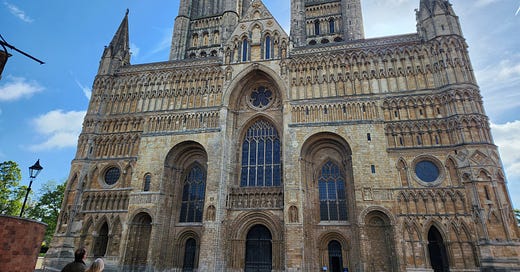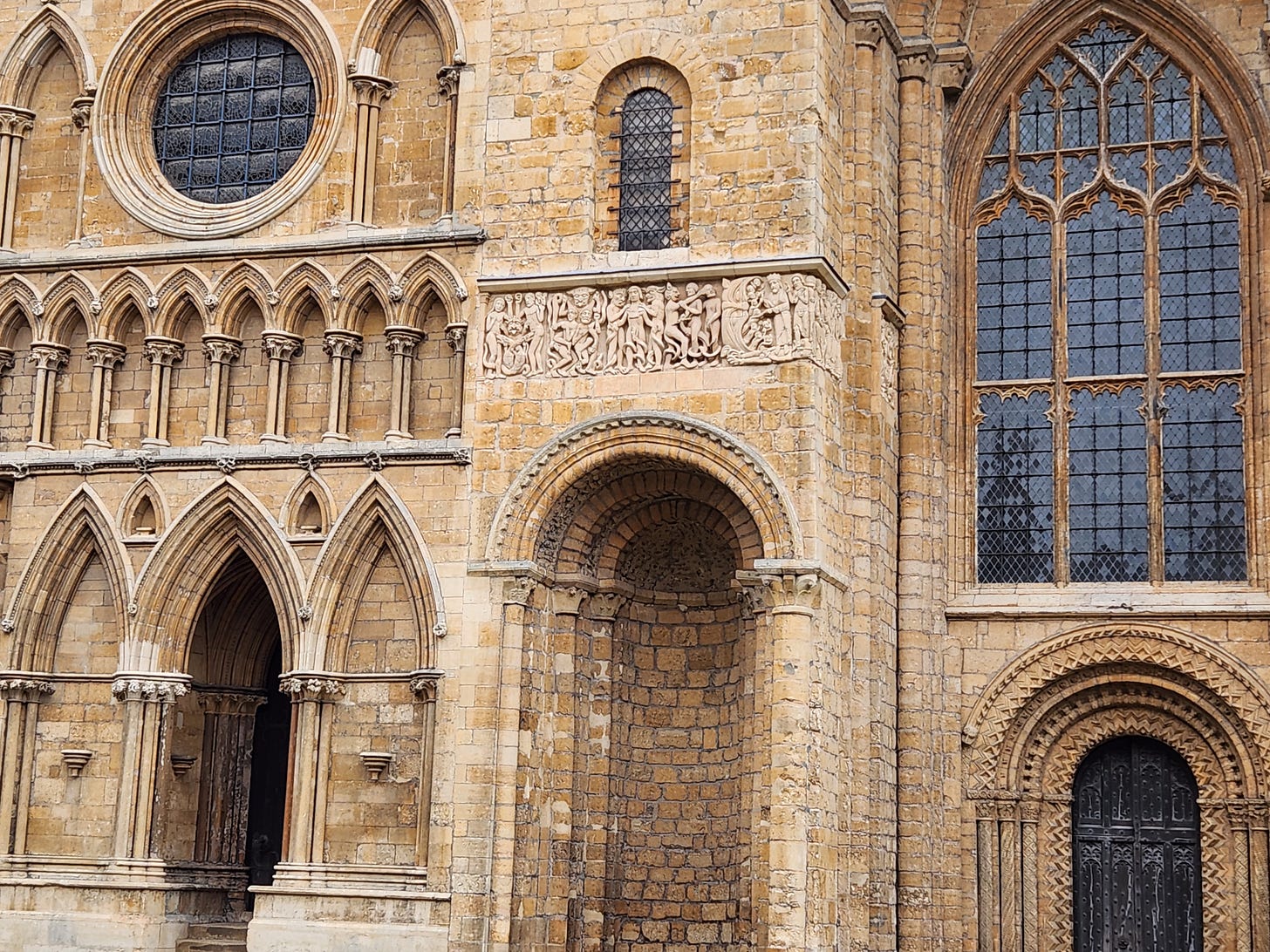A few weeks ago I visited Lincoln and spent 3 hours in its wonderful Cathedral. There was lots to look at and explore, but in this post I want to focus on the 12th century frieze on the West Front of the Cathedral.
It’s certainly a spectacular building but, like most of our churches in England, it is the product of multiple periods. All the round arches you see here (mostly at the bottom of the building) are Norman and from the period 1124-1148. All the “pointy bits” are after 1185 and into the 13th century, though the window tracery (the stone bits holding the glazing together) is even later. Lincoln suffered an earthquake in 1185 which necessitated a lot of rebuilding and, as architectural fashions changed, new work was done in “modern” styles.
What I’m going to focus on in this post is an important relic of that early 12th century building - the frieze which stands high on the oldest parts of the west front. You can see it here, above a kind of portico (notice the slightly bent arch beneath, probably a result of the 1185 earthquake).
I’ve spent a fair bit of time pondering the images I saw, and trying to put myself in the place of the medieval people looking at them from below. What were they for? That’s what I will consider in this post.


Keep reading with a 7-day free trial
Subscribe to Incola ego sum in terra to keep reading this post and get 7 days of free access to the full post archives.





